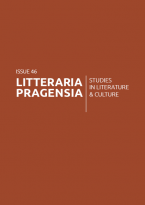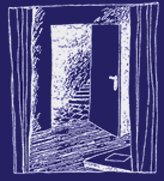
|
23.46 "Tears, & Tortures, & the Touch of Joy": Byron in ItalyEdited by: Alan Rawes and Mirka Horová Volume: 23 Issue: 46 December 2013 |
Contents
|
Alan Rawes
,
Mirka Horová
Introduction
|
1 |
|
Alan Rawes
"From the Italian": Byron's Translation of Pulci's Morgante Maggiore
show abstract
This essay argues that the usual reading of Byron's translation of Pulci's epic - that it is a literal translation through which Byron sought to learn Pulci's comic style and justify the improprieties of Don Juan - is a reductive one. The essay lays out what we know about Byron's engagement with Pulci, then looks in detail at some stanzas of his translation of the Morgante, demonstrating that it is more creative than is usually recognized. The essay then argues that it also has a larger significance for our understanding of Byron's career as a poet than has yet been registered. Reading and translating Pulci, the essay suggests, not only influenced Byron's comic and satiric writing, but also inspired him to return to the Byronic Hero, to develop him in new ways and extend him in new directions, resulting in the long line of alienated, defiant but ultimately tragic heroes that Byron produced alongside Don Juan.
|
6 |
|
Maria Schoina
Byron and The Liberal: A Reassessment
show abstract
Byron’s association with the circle of British ex-patriots based in Italy aiming to implement the joint literary project known as The Liberal marks a crucial and controversial point in his literary career, as well as in the history of his Italianization. Setting off from the assumption that the publication of the periodical reveals, through its resonant public reception, widespread anxieties about the state of British literature and society, as well as the changing trends in the British literary culture of the period, this essay attempts to re-assess the dynamic of Byron’s association with the infamous project by investigating the complex ways in which his conception, at that time, of liberalism, of literature, and of their interaction, feeds into one of his key contributions to the journal, his translation of the first canto of Pulci’s Morgante Maggiore. In addition, the essay argues that the journal’s reformist agenda combined with the writing of the later cantos of Don Juan to consolidate Byron’s revisionist project in poetry, a project which reflects, in turn, a model of political behaviour. The essay suggests that Byron’s search for an alternative poetic style, and his attempt to create a publishable platform that could accommodate it, coincides with his re-discovery of Pulci in 1820. |
23 |
|
David Laven
Sex, Self-Fashioning, and Spelling: (Auto)biographical Distorion, Prostitution, and Byron's Venetian Residence
show abstract
This
article seeks to question the manner in which biographers of Byron have adopted
an uncritical approach when using the poet's own writings from his Venetian
period. Looking closely at Byron's compulsive sexual activity during his
residence, it argues for a more nuanced reading of the Byron myth. By restoring
agency to the Venetian women who prostituted themselves to Byron, it argues
that authors have too readily accepted his self-aggrandizing and often
misogynistic account of his time in Venice. Finally, it reflects on the
commodification of Byron by Venetians, and on how later English visitors to the
city sought to gain intimacy with it through a "Byronized" existence.
|
38 |
|
Mirka Horová
The Carnival of History: Byron's Marino Faliero, Doge of Venice
show abstract
Byron’s first dramatic venture to be published after Manfred, and his first in the new, stern neo-classical style of Alfieri aimed at “reforming the English stage,” presents the singular history of the one doge who conspired against the most serene of republics. The historical figure of Marino Faliero fascinated Byron and his dramatic portrayal of the renegade doge is replete with the truly Venetian element of carnival. The play first presents a dark vision of a carnivalized state where the doge is reduced to a puppet and power rests in the hands of a masked, sinister patrician council. It then offers a reading of Faliero’s rebellion against the state he represents as an act of self-carnivalization, while the failure of this coup d’état in turn fulfils its purpose as a carnival event, restoring the given social order. Yet, extending Venice’s carnivalizing culture beyond the control of the patricians, the drama also takes up the future of Faliero’s history and its surprising legacy, which thwarts official attempts to vilify and silence/erase Faliero’s history. |
53 |
|
Piya Pal-Lapinski
The Politics of Judical Torture in The Two Foscari: Byron and Verdi
show abstract
The practice of judicial torture presents a perfect example of Michel Foucault’s concept of biopolitics: the convergence of material bodies with the politics of the state. Byron’s examination of torture and its relevance to the Venetian state in The Two Foscari resonates with the re-emergence of torture in global politics during our own times and the problem of its representation within aesthetic and political discourse. This essay focuses on the biopolitics of judicial torture in Byron’s Venetian drama and its transformation into Verdi’s opera I Due Foscari. Whereas Byron’s play intervenes in the shifting post-Enlightenment view of torture constructed by Beccaria, Bentham and others, Verdi’s adaptation is positioned against the politics of the Italian Risorgimento. It is by situating the torture of Jacopo Foscari somewhere in between its invisibility (offstage) and the language used by both the torture victim and the state to describe it that Byron grapples with the difficulty of representing torture and its insidious relationship to the state’s conception of itself. Whereas both Byron and Verdi use torture to critique the state, they confront the problem of erasing, or aestheticizing, torture in different ways. By exploring the limits which they set to the aesthetic visibility of the effects of torture on the body, this essay traces through The Two Foscari and its transformation from play to opera a meditation on the post-Enlightenment state, especially in the context of Italian nationalism. |
70 |
|
Will Bowers
Italian Travel, English Tourism, and Byron's Poetry of Exile
show abstract
The purpose of this essay is to examine the shift in Byron’s poetry between his “Years of Fame” in London and his Italian exile, and how this shift is intrinsically bound up with the changes occurring in post-1816 British attitudes towards Italy. The examination is conducted through a close-reading of a variety of texts including Byron’s poetry and correspondence and the manuscript diaries of British tourists. At the centre of Beppo, Byron praises the Italian everyday by placing it in sharp contrast with quotidian Englishness: a satirical mode available to Byron precisely because he had been at the centre of London life but was now at the heart of Venetian society. Moreover, while he has seen Venice with the sentimental eyes of a British visitor, as in Childe Harold’s Pilgrimage, he can now claim to compare the two cultures as a native of one and something much closer to a native of the other than the contemporary British tourist. The second half of the article considers Don Juan to show that Byron was in no sense asleep in Italy – in his most famous work he was engaging with the changing cultural relations between his native and adopted homes. Despite his claims to be uninterested in England while in Italy, Byron’s correspondence with his friends and publisher betrays an interest in the growth of British travel after 1816, and the literature it produced, which are repeatedly sent-up in Juan’s journey from Dover to London. |
86 |
|
Gabriele Poole
Byron's Impact: English Radicals, Italian Brigands and the Byronic Hero
show abstract
This essay seeks to contribute to the debate about Byron’s impact on European history and politics as this was staged at the 39th International Byron Conference held in London in 2013. The appropriation of Byron’s Oriental Tales that occurred during the trial of the leaders of the Pentrich rising of 1817 is used to illustrate the ambivalent aspects of the Byronic model of charismatic political leadership in the context of the nineteenth-century struggle for democracy in England. The essay then turns to the impact of Byron in Italy during the period leading up to Italian unification in 1861, and specifically discusses two works by the Calabrian authors Domenico Mauro and Vincenzo Padula, illustrating the ways in which the Byronic model was appropriated and applied to a very different local situation, through making Calabrian brigands the heroes of fictional stories, and showing how in Padula’s later work, Antonello, brigante calabrese, this appropriation takes on an explicitly politicized form, exceeding that of the original model by superimposing on to the nihilistic revolt of the Byronic Hero the ideals of the Risorgimento. |
103 |
|
Review of
Josef Jařab
Horace M. Kallen a vývoj americké kulturní identity (Horace M. Kallen and the Evolution of American Cultural Identity)
Olomouc: Periplum, 2011. 147 pp.
→ Stanislav Kolář, In Search of American Identity |
119 |


